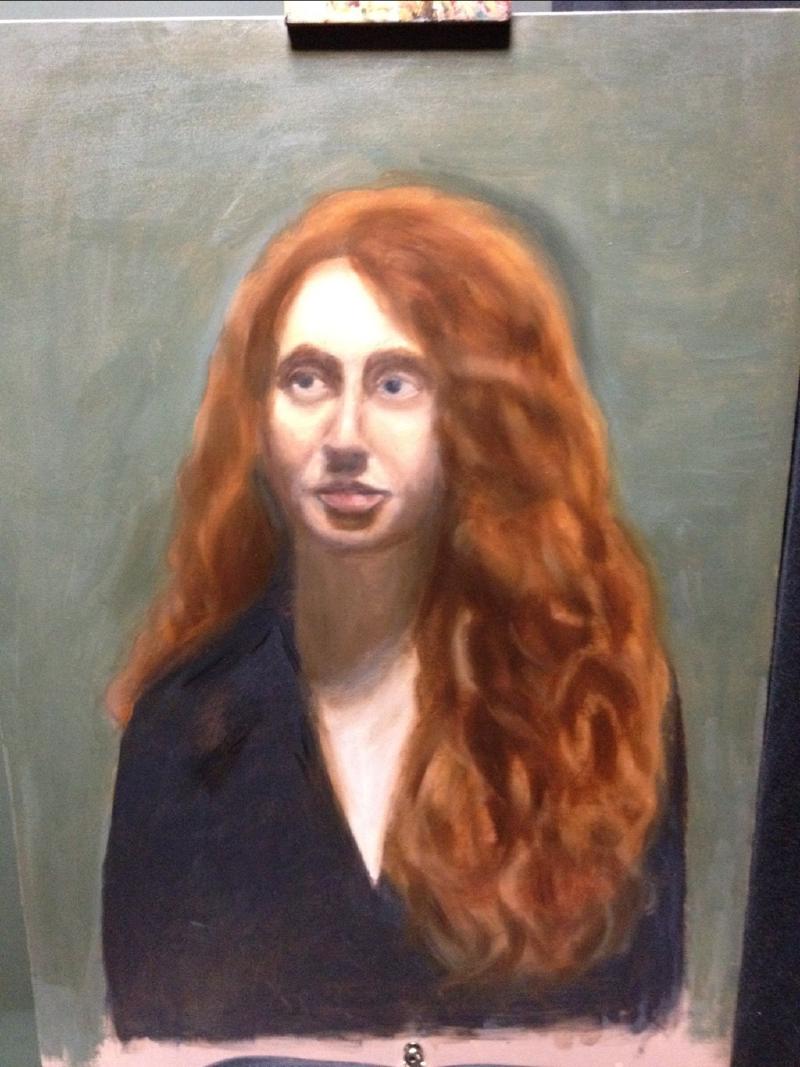Well, I’d hoped to have something a bit less flat-looking by the end of the day, but it’s all part of the learning process. To paint a picture, you have to juggle a lot of divergent concepts, such as 2-dimensional measurement, how 3-D objects behave in light, perception of tone and hue, and knowledge of anatomy. Add to that the learning curve of figuring out how oil paints behave and the mad-scientist chemicals you need at your disposal, and it’s no wonder a newbie is limping toward the finish line!
I know the knee-jerk response will be “you’re too hard on yourself,” and “it looks great,” but rest assured that I’m not beating myself up. I’m enjoying the hell out of this! And I’m sure I’ll find further enlightenment in the final two sessions, and maybe even surprise myself with the final result.
What I enjoy about this class is the same thing I like about my drawing class in New York: the teachers are neither condescending nor falsely encouraging. Like training wheels, or better yet, bowling bumpers, they keep you on the right path, and if you’re willing to pay attention (jury’s still out!), eventually you’ll be able to succeed on your own.
I think I’ll always gravitate toward digital art, but I had an idea today, that I’m sure has been done. I had my digital painting of my sister’s dog printed on canvas and it looked pretty good. What if I painted digitally up through the first painting stage, had it printed, then did second painting on top of it? Then I’d have a truly one-of-a-kind oil painting, but save about 10 gallons worth of paint I would have wasted on the hard part. Lazy or genius? Don’t answer that.
